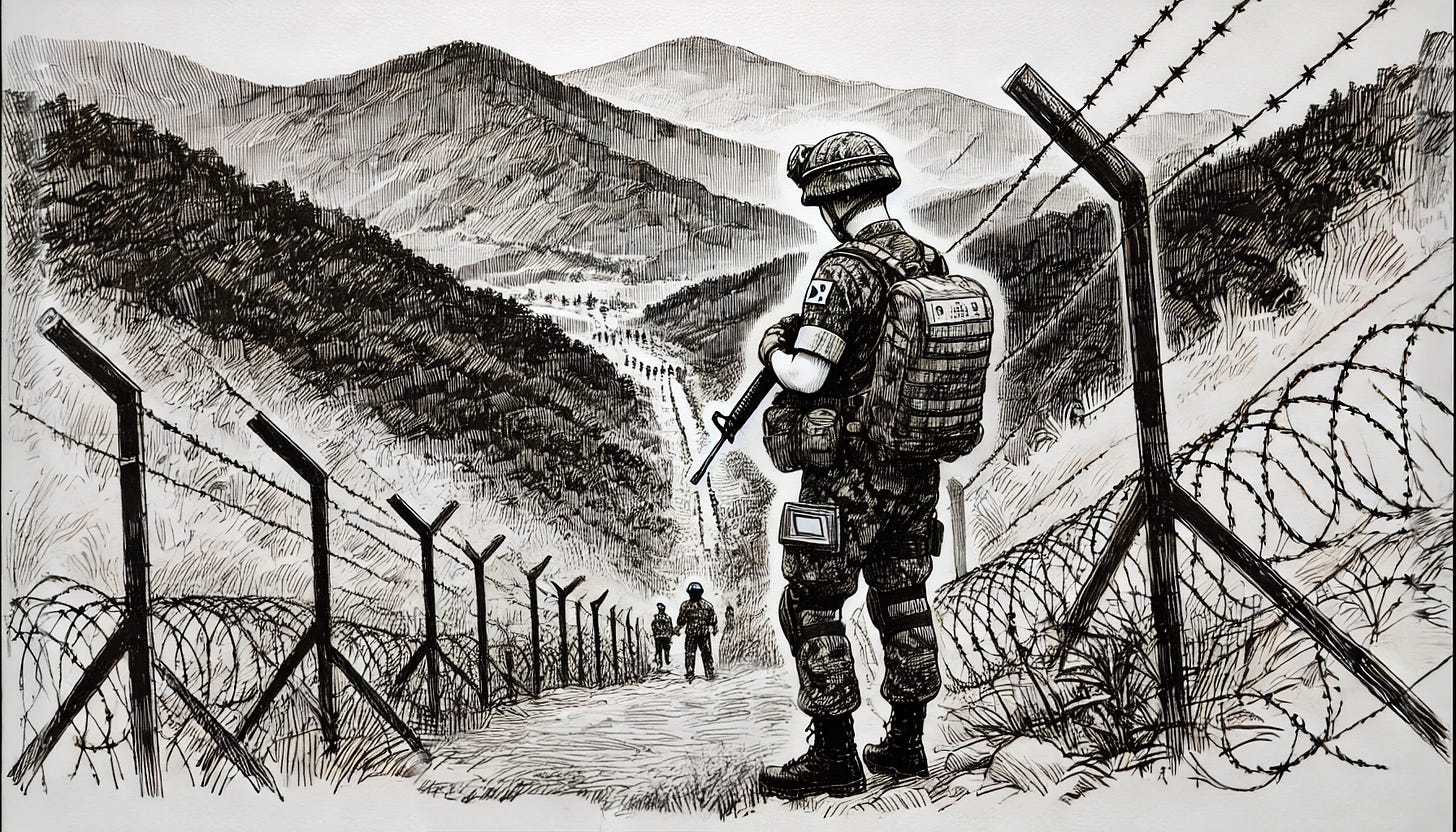The unraveling of the U.S.-Korea alliance
The logic that once made an American military presence indispensable is no longer as strong as it was during the Cold War
The Cold War often feels like the defining moment of modern geopolitics, the era where alliances were forged and the global order was set. But in the grand sweep of history, it is merely a brief interlude in the much longer story of regional dynamics shaped by geography. The Korean Peninsula has existed for millennia at the crossroads of larger powers—China, Japan, and the steppe empires before them—long before the U.S. and Soviet Union imposed their ideological struggle onto the region.
The division of Korea, the rise of military alliances, and the presence of American troops were not the beginning of history but rather temporary responses to the momentary conditions of the 20th century.
Now, as the Cold War recedes further into the past, older patterns of regional power—China’s gravitational pull, Korea’s struggle for strategic autonomy, and the ebb and flow of external influence—are reasserting themselves. What seemed like a fixed order was in reality just a brief pause in the longer and more fundamental forces of geography and history.
For more than seventy years, the U.S.-South Korea alliance has been a pillar of security in East Asia, forged in war and sustained through Cold War tensions. But today, the forces that once held the alliance together are weakening.
Over the next four years, the pressures pulling Washington and Seoul apart will accelerate to a point where the alliance, once considered indispensable, begins to fade into history.
First, strategic priorities are diverging. The United States was historically opposed to military alliances. It was large enough and dominant enough in its region to shun military alliances. When it finally did enter into military alliances, they were supportive of broader global strategic interests - maintaining U.S. strength and capacity as a maritime power in competition with a continental power stretching from Eastern Europe to the Pacific.
There are broad regions of strategic competition between maritime and continental powers. Each region changes as the relative strength transforms. During the Cold War, the U.S. saw South Korea as a frontline state in this strategic competition, justifying its military presence and security commitments. As global power dynamics shift, Washington’s global strategic priorities are evolving. South Korea no longer represents the essential strategic pivot onto the continent that it once did.
In a broader sense, American foreign policy has seen periodic shifts between global engagement and strategic retrenchment. Reducing U.S. overseas military commitments, and the presence of U.S. troops in Korea, are no longer necessarily central to this global strategy.
Second, South Korea has developed. South Korea has transformed from a war-torn country dependent on U.S. security guarantees into a global economic and military power. South Korea now has one of the world’s most advanced militaries, an indigenous arms industry, and growing confidence in its ability to manage its own security.
The country’s military advancements—ranging from next-generation fighter jets to long-range missile systems—reduce its reliance on the U.S. Moreover, discussions about South Korea acquiring its own nuclear deterrent, once unthinkable, are reaching a point of no-return. If South Korea determines that its security can be or must be maintained independently, the logic of hosting U.S. troops and adhering to an alliance structure largely shaped by American priorities will fade.
From the moment the Rhee Administration accepted the division of the Peninsula and an end to the Korean War, the alliance was transactional. The Vietnam War, the Gulf War, Afghanistan, and everything in-between. The relationship never stopped being transactional - the only difference is that for South Korea, these transactional costs are starting to match real costs.
Third, both states now have divergent approaches to the region. For decades, Washington and Seoul have coordinated their policies toward North Korea and China. However, with inherently different strategic outlooks as a result of their size, geography, and histories, their approaches have often been covered over by short-term concessions - the first of which started with the U.S. desire to end the Korean War and the Rhee Administration’s desire to unify the Peninsula. Individuals and groups have consistently made concessions to stay in power that are contrary to national interest. It’s getting increasingly difficult to justify such concessions.
No matter how strong military alliances may be, they cannot override the gravitational force of a billion-strong market sitting just across the Yellow Sea. China is South Korea’s largest trading partner, its key supplier of raw materials, and a crucial destination for its exports. While security concerns may push Seoul closer to Washington, economic survival pulls it inevitably toward Beijing.
The reality is simple: no country can ignore the economic influence of a neighbor that dwarfs it in size, market potential, and production capacity. Over time, trade, investment, and supply chains may do more to reshape Korea’s strategic orientation than any defense treaty ever could.
Fourth, and most importantly, domestic politics has changed. Alliances are not just shaped by international strategy—they are also influenced by domestic political and generational shifts.
Younger South Koreans, who have no personal memory of the Korean War or the Cold War, do not view the U.S. alliance in the same way that older generations did. Many see South Korea as a fully independent nation capable of determining its own foreign policy rather than as a junior partner in an alliance framework set decades ago.
Likewise, in the U.S., domestic debates over military spending and foreign commitments are intensifying. If American voters prioritize economic and domestic issues over global military presence, political leaders - both Republican and Democrat, will begin to steadily reduce America’s overseas obligations, including its troop presence in Korea.
Unlike past periods of tension in the alliance, where disputes could be managed through diplomatic negotiations, these generational shifts represent deeper, more permanent changes in national priorities.
Time and geography not power or ideology?
The weakening of the U.S.-Korea alliance is not the result of a dramatic rupture, but of long-term historical forces that are difficult to resist. While diplomatic agreements, military treaties, and political decisions shape the short-term trajectory of alliances, time and geography play a more decisive role in the long run.
The Korean Peninsula has always been subject to the influence of larger regional powers—China, Japan, Russia, and, more recently, the United States. The logic that once made an American military presence indispensable is no longer as strong as it was during the Cold War.
South Korea’s economic interdependence with China, its growing military self-sufficiency, and shifting generational perspectives are all pushing the country toward a new phase in its foreign relations. Alliances are never eternal, they are always transactional. History is filled with examples of once-strong military partnerships fading as geopolitical realities shift.
While the alliance will not dissolve overnight, the forces pulling it apart—geopolitical shifts, economic realities, and the slow but steady passage of time—are more powerful than any single treaty, military agreement, or leader. Ultimately, history and geography will shape the future of this alliance more than policymakers or theorists anticipate
.





Thank you for this insightful article. In light of advancements in ROK's strategic position, do you believe the conditions for OPCON transfer have been met? And if so, would that be the beginning of a downwards slope towards the end of the alliance?